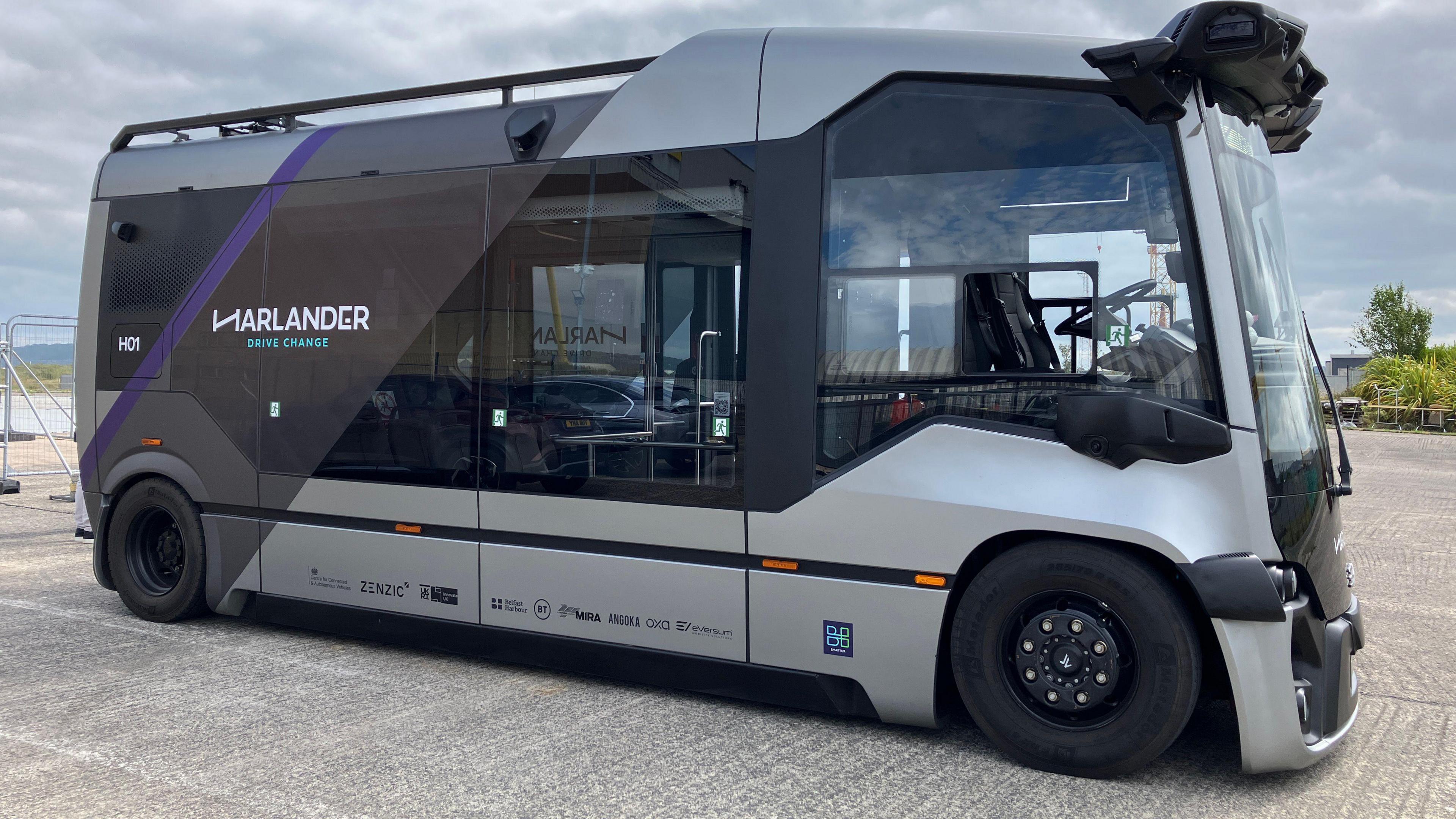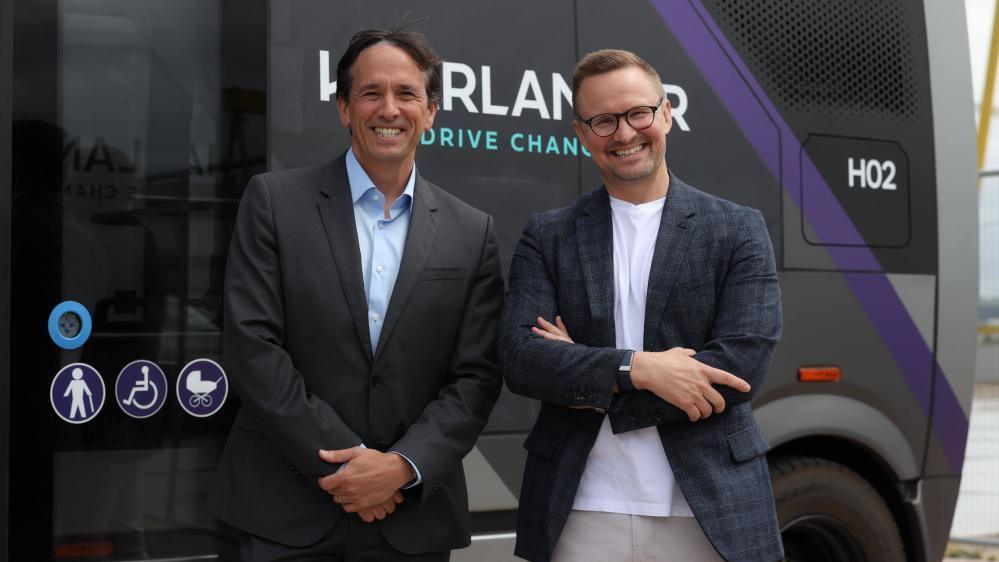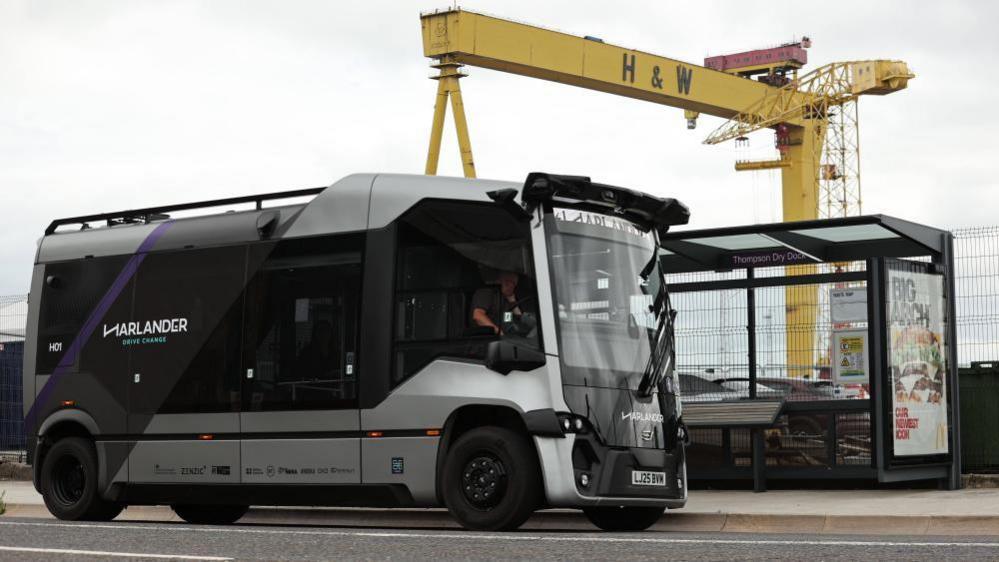Pilot journey begins for NI's first driverless bus

The driverless electric shuttle bus will cover a one mile route for commuters and tourists
- Published
Northern Ireland's first self-driving vehicle has officially begun its pilot journey in Belfast's Titanic Quarter.
Belfast Harbour has said it is the "future of transportation".
The driverless electric shuttle bus will cover a one mile route for commuters and tourists.
The eight-seater vehicle, which has a safety operator on board, will run every 20 minutes between Titanic Halt Railway Station and Catalyst.
'Super-human'
On board it looks and feels like a normal bus, with handrails, a stop button and a back row of seats.
But no one is holding on to the steering wheel. A safety operator sits where a driver would.
Its software developer told BBC News NI the bus has 'super-human' sensory abilities.
Gavin Jackson from Oxa said the bus has been transformed.
"We have cameras on the bus that help you see and reason with the things around you. We've got lasers on the bus that help you build a geometric map of the place you are driving."
He explained that the bus has radars that help the bus to see through things like fog and rain and things that human eyes can't see very well.
"We fuse all of that input together into information that AI (Artificial Intelligence) - which is the Oxa driver - is able to build a plan and drive the vehicle," he added.

Mike Dawson and Gavin Jackson welcome the pilot
The bus has AI which has been trained in understanding that area of Belfast.
Data has been collected to study the road, the furniture of the streets and the behaviour of people. It's then been placed in a cloud to create a simulation.
There is a human back-up on board for the pilot.
Mr Jackson said: "Right now we also have an on board operator which is looking and monitoring the bus's performance. And that person can, if they needed to, step in, in a safety event.
He said eventually there will be no need for human drivers and "we'll be monitoring these vehicles anywhere on the planet remotely in an air-conditioned office".

The bus has an onboard operator monitoring the bus's performance
Mike Dawson , People and Digital Transformation Director at Belfast Harbour said "this is the future of transportation".
"Autonomy is going to play a key role in supporting current public infrastructure and the Harlander is a key part of that. How do we get people out of their cars, connecting to existing public transport networks and solve that last mile connectivity equation that commercially doesn't work today?" he said.
"It is the future and it is coming fast."
Mr Dawson said it's "fully understandable" people would be nervous.
"New technology always brings challenges. But it's a free service, we have a safety operator on board the entire time, making sure that if they need to intervene they can intervene but always making sure your journey is secure and comfortable the whole way."
Eight weeks of testing at the harbour took place ahead of the opening to the public.
The service is free and will run until late September 2025.